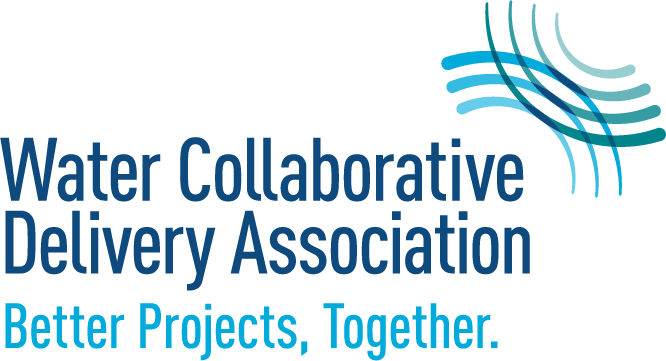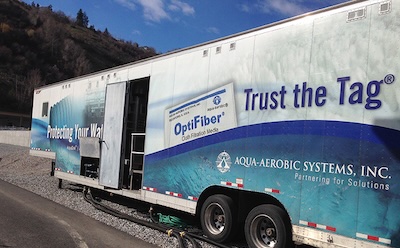One of the biggest hurdles in implementing new technology is the slow pace at which municipalities adapt to change. Bureaucratic processes, budget constraints, perceptions of risk, and regulatory compliance often create delays in adopting innovative solutions. One effective approach to navigating these hurdles is collaborative delivery, where multiple parties, including government agencies, consultants, contractors, and technology providers, work together to pilot emerging technologies.
The Power of Collaborative Delivery
Collaborative delivery leverages shared expertise, resources, and risk management strategies to increase the likelihood of success when testing new technology. By bringing together diverse stakeholders, organizations can benefit from complementary skills, insights, and funding sources, reducing the burden on any single entity.
The key benefits of collaborative delivery in technology pilots include the following:
- Risk Mitigation – Distributing the risks among multiple partners lessens the impact on any single entity in case of failure.
- Cost Efficiency – Pooling financial and human resources allows for broader testing and iteration without excessive expenditures.
- Diverse Perspectives – A multistakeholder approach ensures comprehensive feedback, improving usability and functionality.
- Faster Implementation – With multiple players driving the project forward, technology pilots can scale more quickly and efficiently.
How Piloting Reduces Risk and Accelerates Collaborative Delivery
On-site testing of process-critical equipment can play a crucial role in minimizing risk, optimizing plant design, reducing costs, and expediting the collaborative delivery process. By conducting a site-specific test, end-users can develop a greater sense of confidence in equipment design and sizing decisions and make necessary adjustments before committing to full-scale implementation. Key ways in which piloting enhances collaborative delivery include the following:
- Early Issue Identification – Pilots allow teams to uncover and address potential technical or operational challenges before widespread adoption, reducing costly errors and delays.
- Incremental Deployment – Instead of a sudden transition to new technology, piloting enables phased implementation, ensuring smoother adoption and better stakeholder preparedness.
- User Feedback Integration – Engaging end-users early in the process ensures that the final solution is practical, user-friendly, and aligned with real-world needs.
- Regulatory Compliance Testing – Pilots provide an opportunity to navigate legal and regulatory requirements in a controlled setting, preventing roadblocks during large-scale implementation.
- Design and Cost Optimization – Results from on-site testing can be directly used to refine cost models, site layouts, and operational considerations.
By incorporating piloting into the collaborative delivery model, organizations can build confidence in new technologies, streamline workflows, accelerate the path to full deployment, and address perceived risks with tangible data and experience.
Testing Proven Technologies
It should also be noted that piloting should not be seen as exclusive to innovative technologies. In fact, testing well-proven technologies like cloth media filtration that have existed for 30+ years offers unique opportunities to refine cost models, develop equipment preferences, understand aspects of operations unique to a particular application, and provide useful performance data when applying the technology in new or modified treatment processes.
Key Elements of a Successful Collaborative Technology Pilot
To maximize the success of a technology pilot through collaborative delivery, organizations should focus on the following core elements:
- Clear Goals and Objectives – Before launching a pilot, all stakeholders must align on a clear vision and measurable outcomes. Defining success criteria, such as improved efficiency, cost savings, or enhanced customer experience, ensures that the pilot remains focused and delivers tangible results.
- Strong Partnerships and Stakeholder Engagement – The success of collaborative delivery hinges on forming strong partnerships. Organizations should identify key stakeholders—tech providers, government bodies, industry experts, and end-users—who can contribute valuable expertise and resources. Regular communication and clearly defined roles are essential to maintaining alignment throughout the project.
- Agile and Iterative Testing – Rather than a rigid, all-or-nothing approach, pilots should embrace agile methodologies. Iterative testing allows for continuous feedback and improvements, ensuring the technology meets real-world needs. Prototypes, beta tests, and phased rollouts can help refine solutions before full-scale deployment.
- Data-Driven Decision-Making – To evaluate the pilot’s effectiveness, organizations must establish key performance indicators (KPIs) and leverage data analytics. Tracking user engagement, system performance, and cost-effectiveness provides valuable insights that guide future improvements and scalability decisions.
- Scalability and Long-Term Viability – A technology pilot should be designed with scalability in mind. If successful, the solution should seamlessly transition from the pilot phase to full implementation. Early-stage planning should consider infrastructure needs, regulatory compliance, and potential barriers to adoption.

